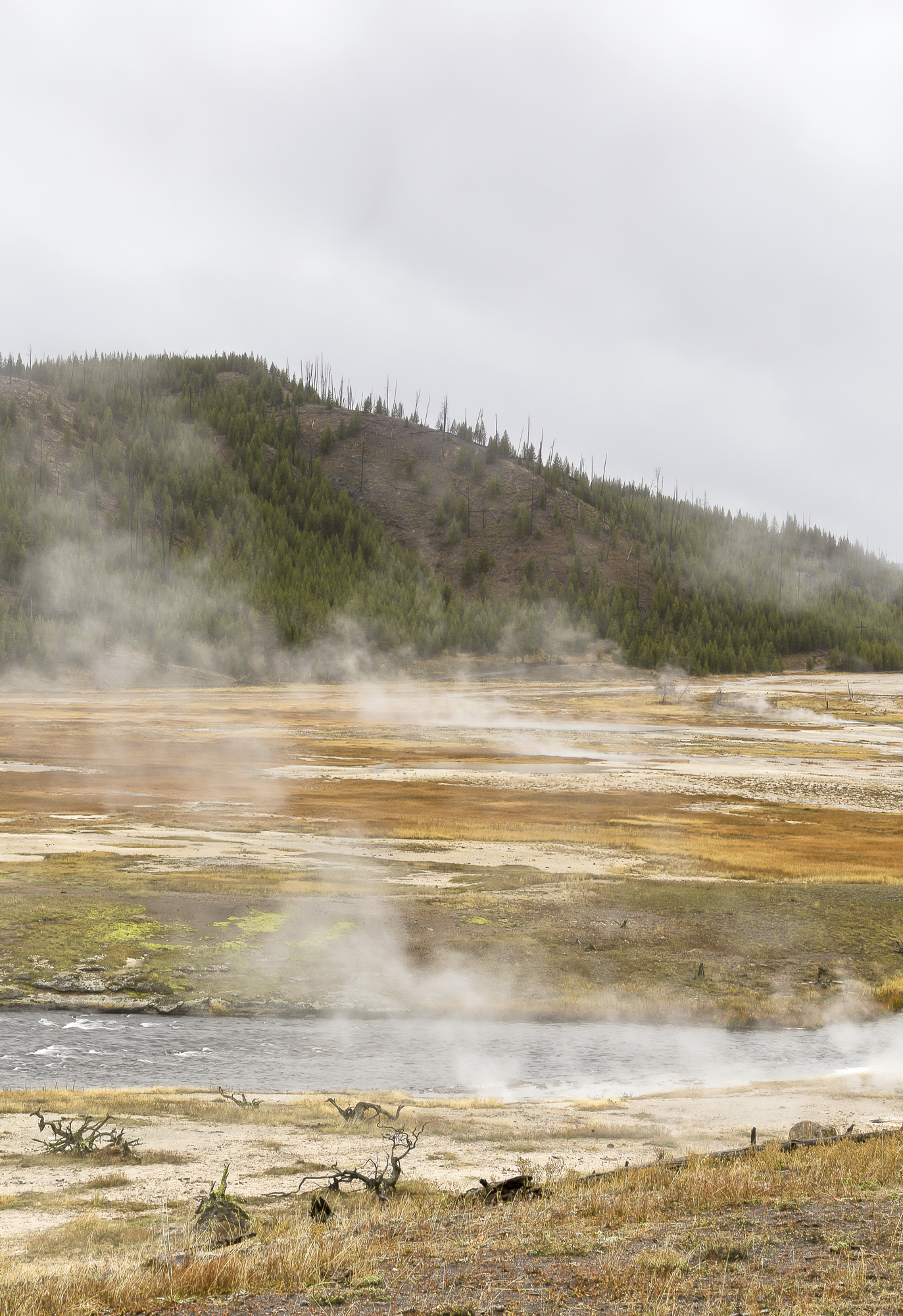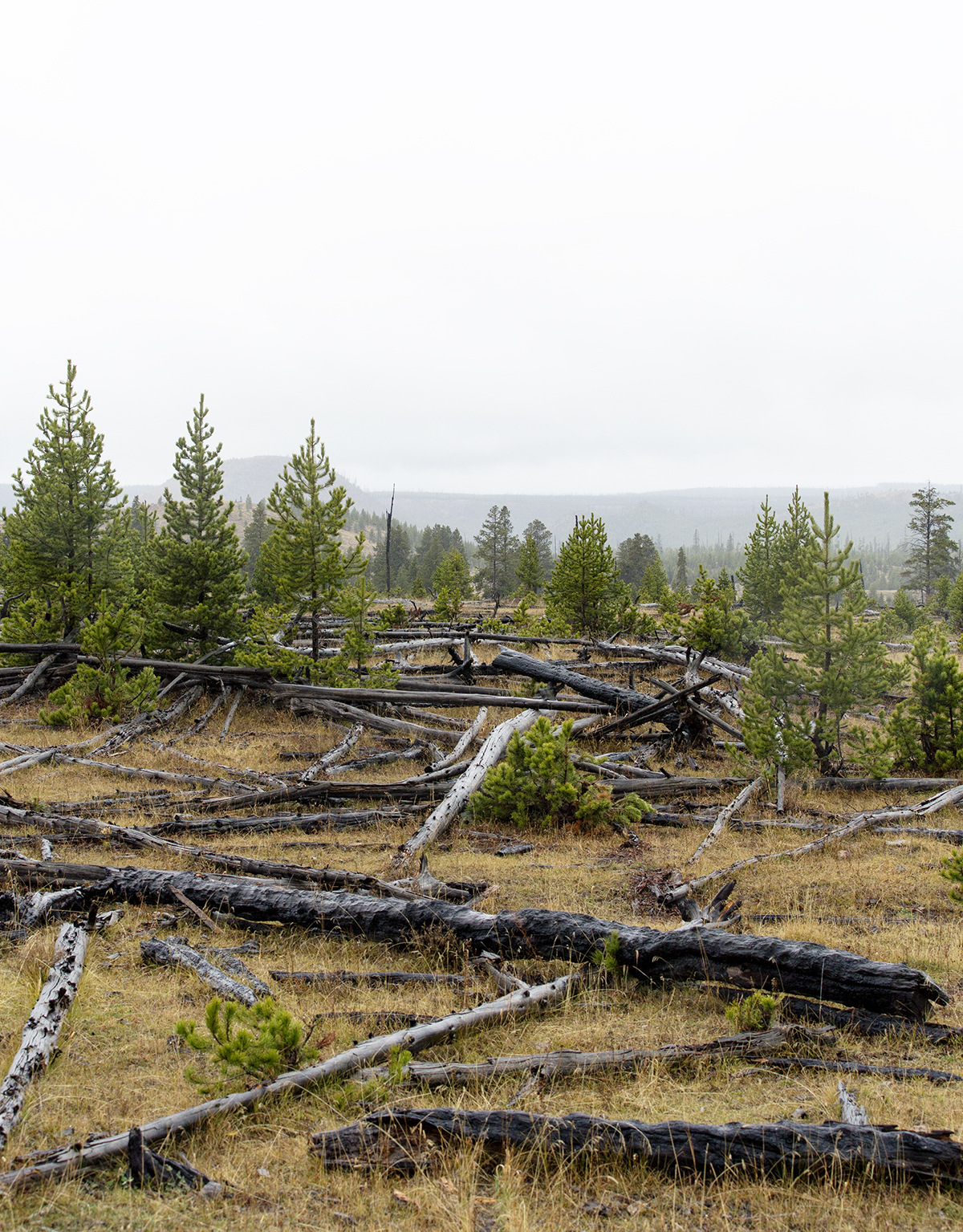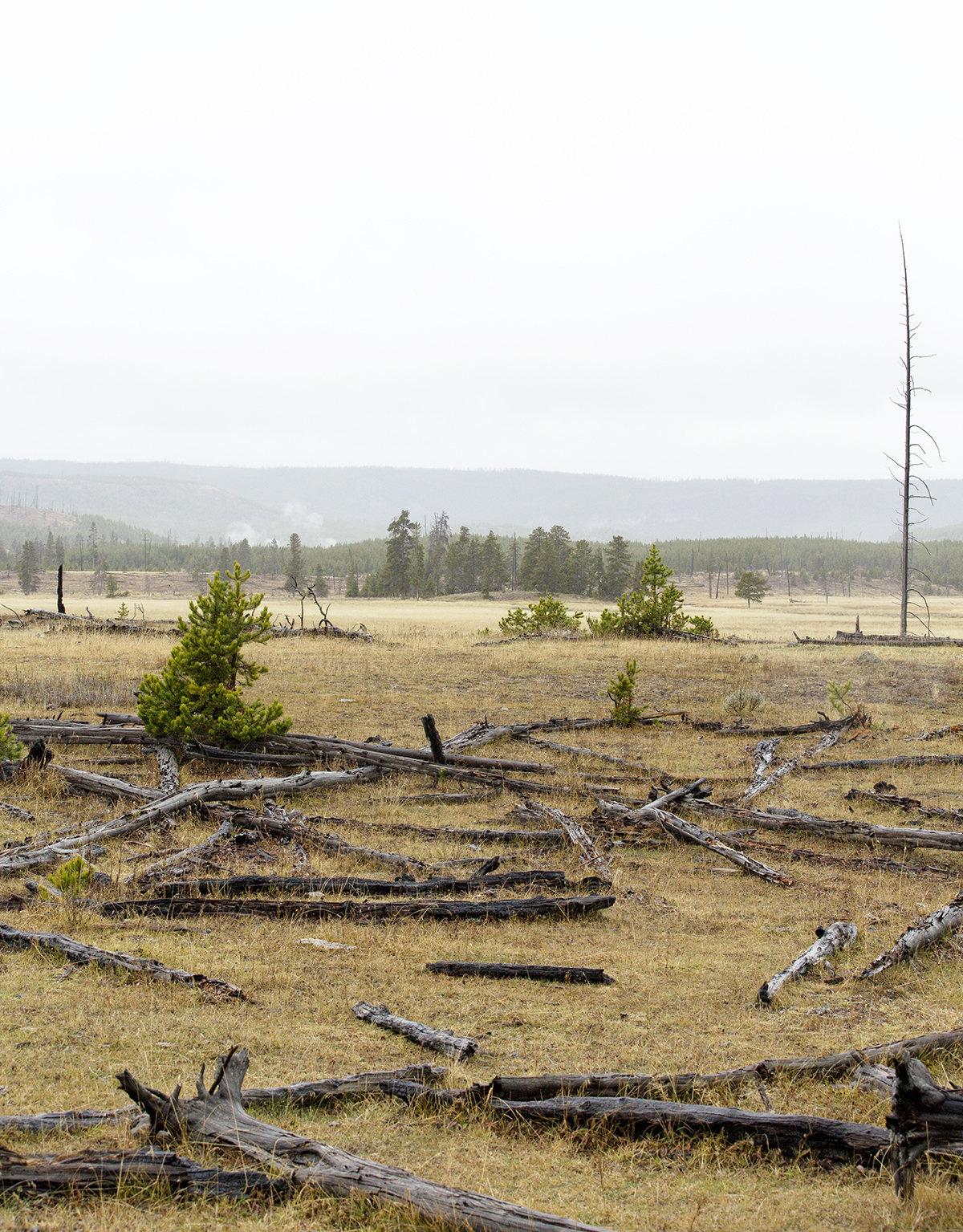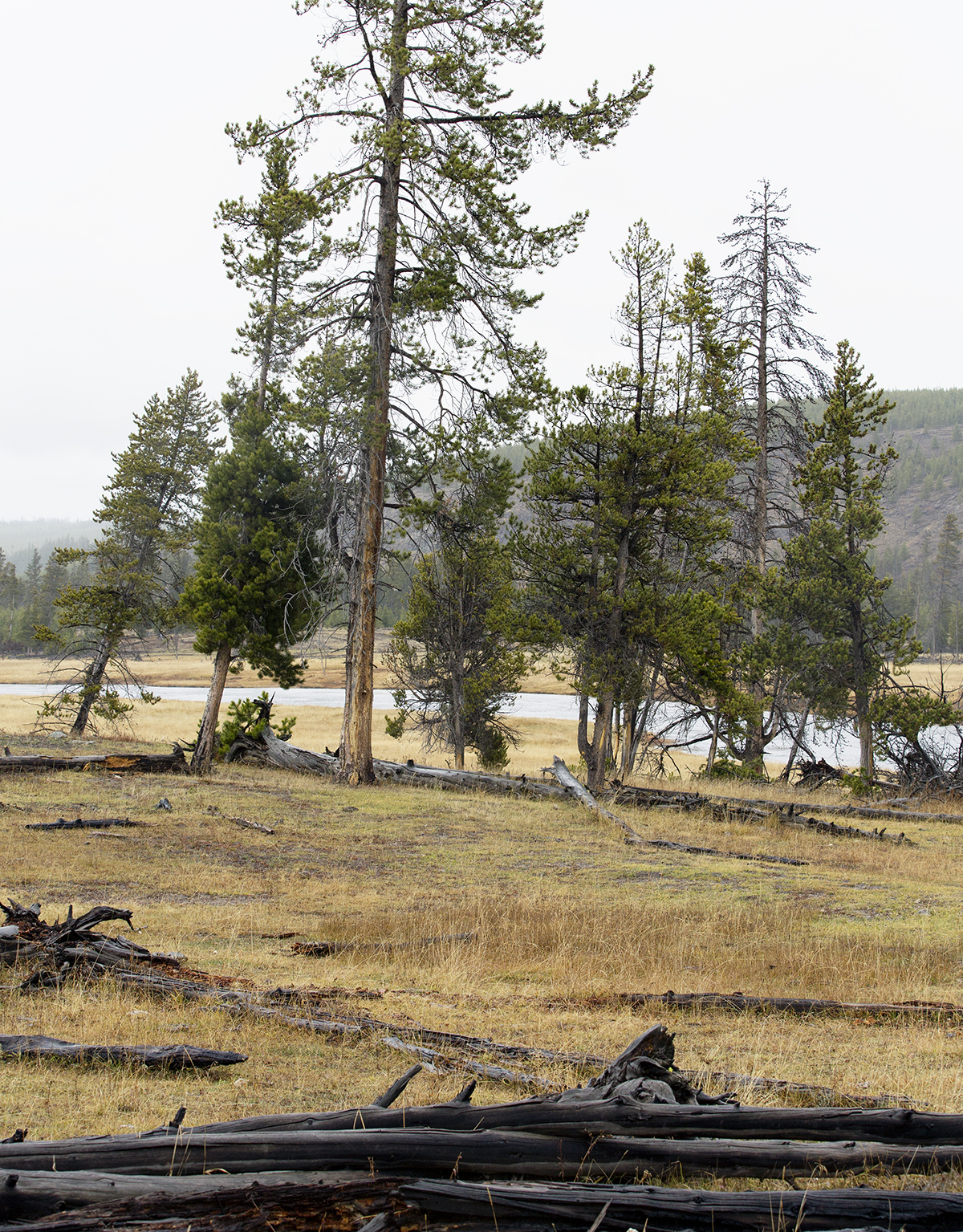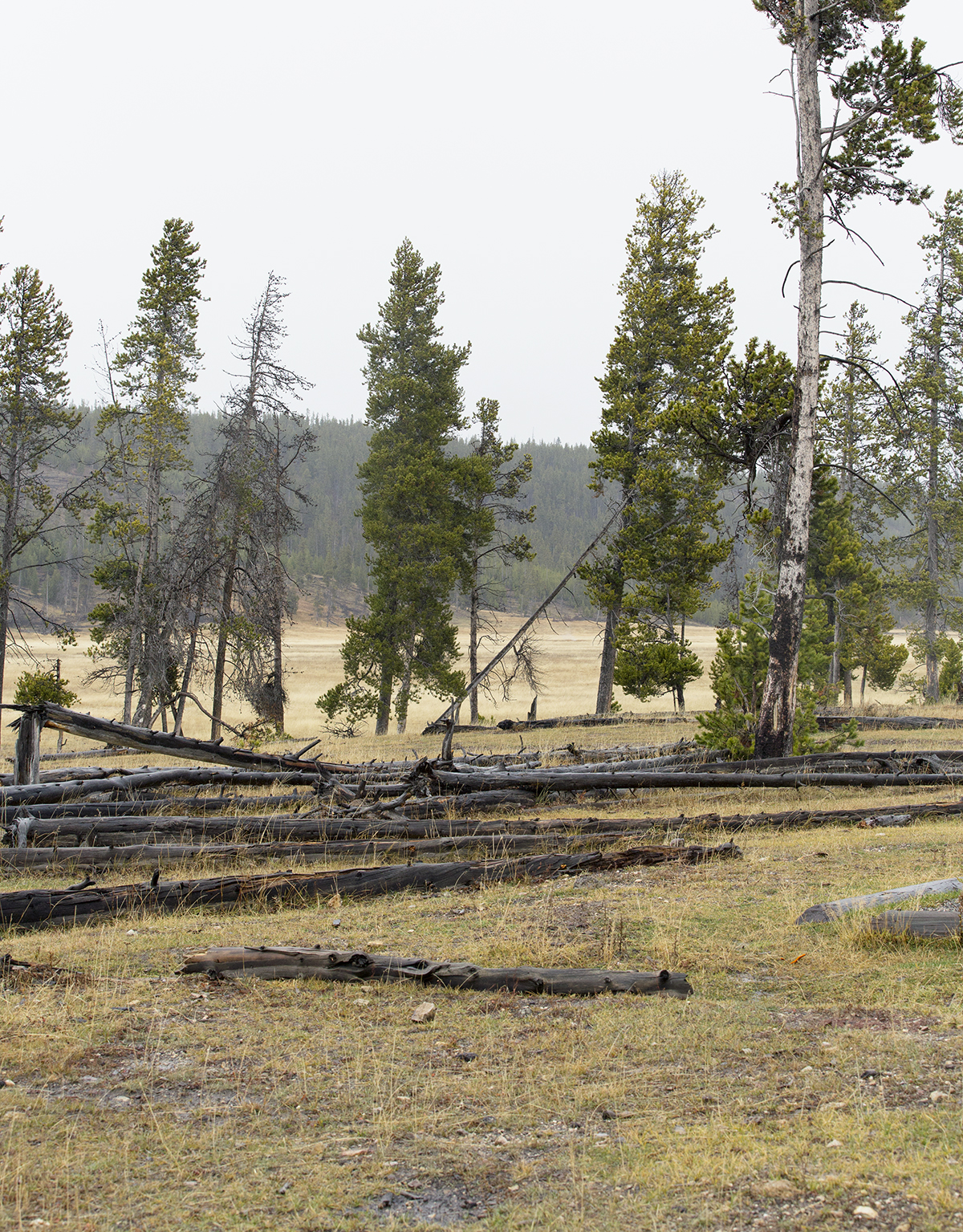Data Trespass: Illegal Photographs #23-31, 2016. Printed 2018. 9 framed Chromira Lightjet prints on Kodak Endura Matte paper. Edition of 2 with 1 Artist/Exhibition Proof. Overall dimensions approx. 550cm x 80 cm
Data Trespass: Illegal Photographs is a conceptual suite of panoramic images that antagonize a recent Wyoming statute that makes outdoor photography an illegal and indictable form of data collection. This work was purchased by the National Gallery of Canada in July of 2018 and now resides in their collection.
In March of 2015, the State of Wyoming passed a law that made it illegal to photograph on ‘open land’ 30 or more miles outside a town.
Called the Data Trespass statute, it stated that the collection of 'resource data’ was deemed an offence punishable by a $5,000.00 fine and up to a year in prison when the intent was to submit the information to any municipal, state, or federal agency. Resource data is defined as, in short, samples of or related to air, soil, water, etc. or photographs of the same. Whether intended or not, the state of Wyoming had made photographing on open land illegal. The illegality hinged ultimately on the suspect’s intent. Had someone wanted to submit a photograph to a photo contest run by any municipal, state, or federal agency (National Geographic, for example), they would have committed a crime.
Data Trespass: Illegal Photographs #s 23-31. Click above to view each image individually.
The law was ostensibly sponsored by Wyoming’s powerful and economically important cattle ranching industry. The volume of cattle is such that pollution of various forms (methane, e. coli bacteria) has permeated the environment on a massive scale (the Green and Colorado rivers into the Grand Canyon is said to contain e.coli whose source is from cattle). There are roughly 1.3M cattle and 500k people in the state. The law is designed to protect the industry from citizen ‘agents’ who would expose the questionable practices of the industry. The law is also in direct conflict with other Wyoming statutes that compel citizens to report nefarious environmental practices. It has been constitutionally challenged federally, but was only modified recently in minor ways.
I travelled to Wyoming with carload of equipment and an assistant in late October 2015. My photographs were shot with the intent of directly antagonizing/contravening the Data Trespass statute. I had at least 2 conceits in mind:
• 1. It is utterly absurd to prevent anyone making a photograph outside on public land.
• 2. Placing faith in photographs as evidentiary truth is equally absurd.
My illegal photographs are ultimately innocuous visions of landscape that may appear as though some undetermined environmental calamity is taking place, but none is: any environmental degradation here, very near the continental divide in Yellowstone Park at the most geo-thermically active place on earth, is entirely a ‘natural’ occurrence. My photographs, particularly as they are constructed here as a panorama with overlapping individual frames, the doubling of information (data), are ultimately of no greater evidence of anything. It’s a ‘false panorama’ that, like all images are in my view, at best, a dubious presentation of the subject. Predictably, my Illegal Photographs gathered no attention from authorities. In #30 (second from the right), there appears an SUV with a couple of people standing beside the car—they don’t appear to be tourists admiring the Firehole River before them. They are perhaps some ‘authority’ enforcing the Data Trespass statute, but it is unlikely.
Nonetheless, the notion that a photograph can be ‘illegal’ is a powerful reminder of the import that photography has in the popular imagination regardless of that which is actually depicted.
Data Trespass: Illegal Photographs #1-10, 2016. 10 framed Chromira Lightjet prints on Kodak Endura Matte paper. Edition of 2 with 1 Artist/Exhibition Proof. Overall dimensions approx. 600cm x 80 cm






